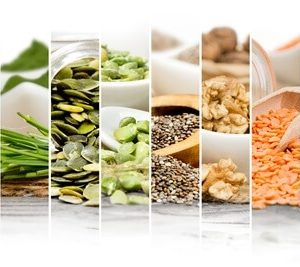What Is the Glycemic Index?
Glycemic Index is a Number
The glycemic index is a number associated with how fast your body changes the carbs in a particular food into glucose.
A Glycemic index number value of 100 represents the standard, an equivalent amount of pure glucose (the food used as a standard is white bread). Starchy foods have a high Glycemic Index (GI) which equals a rating of 70 or greater. Medium GI scores are 56-69, and low Glycemic Index (GI) foods have a rating of 55 or less. Foods that are in the medium and low scores should be consumed more often.
Glycemic index values can be found on food packaging. Harvard University has published a list with more than 100 foods. Processed and refined foods tend to be higher on the glycemic index than foods found in their natural state.
Why are High-Glycemic Foods Unhealthy?
High-Glycemic food makes your blood sugar shoot up quickly. Due to the fact carbohydrates such as refined sugar and bread are easier for your body to convert into glucose, it makes it difficult to control your blood sugar. When you are diabetic, even with insulin and diabetes medications, if you have a poor diet, you will not be able to control your blood sugars. Uncontrolled blood sugars cause a variety of health concerns for diabetics such as neuropathy, amputation or death. Moderate and low glycemic food, like vegetables and whole grains, are slowly digested so do not produce the same spike.
The glycemic index can give you a way to differentiate slow-acting or “good carbs” from the fast-acting or “bad carbs.” You can use it to help with monitoring your carbohydrates which will help keep your blood sugar steady. It is important to realize that age, how active you are, and how fast you digest food also affect how you react to carbohydrates.
What Changes the Values?
Food Preparation: Fat, fiber, and acid lower the glycemic index. The longer you cook starchy food such as pasta, the higher their glycemic index is going to be.
Food Ripeness: The glycemic index goes up with fruit as they ripen.
Food Combining: The overall glycemic index can be brought down by combining a high-glycemic food with low-glycemic food.
Healthy Diet is About Variety Containing Whole Food
The glycemic index isn’t the only thing you should consider when making choices about proper nutrition. Just because a particular food is low on the GI doesn’t mean it is be good for you. An example would be M&M’s which are lower on the GI than peas. However, no one would dispute the fact that peas obviously have more nutritional value. It is important to take into account vitamins, minerals and calories as a matter of importance.
You can still eat higher GI foods, so don’t feel you need to totally deprive yourself. Just remember the key is smaller portions, and counterbalance them with nutrient dense, low-glycemic foods.
Check out the Harvard Medical, Glycemic index and glycemic load for 100+ foods list for more information about how foods affect blood sugar and insulin.
Learn more about Nutrition and how food affects your health with our Principles of Sports Nutrition (PSN) course. This insightful course (will teach 110 fundamental sports nutrition principles essential to achieving and maintaining optimum health, performance and longevity.
Cathie Glennon, BCRPA-SFL
https://care.diabetesjournals.org/content/31/12/2281.full
https://www.diabetes.ca/diabetes-and-you/healthy-living-resources/diet-nutrition/the-glycemic-index
https://www.webmd.com/diabetes/guide/glycemic-index-good-versus-bad-carbs?page=2



